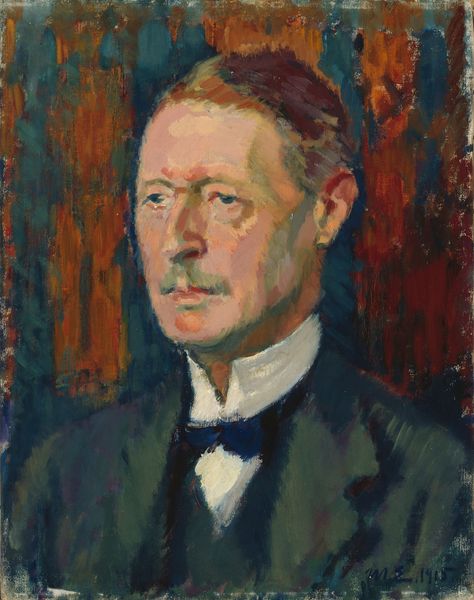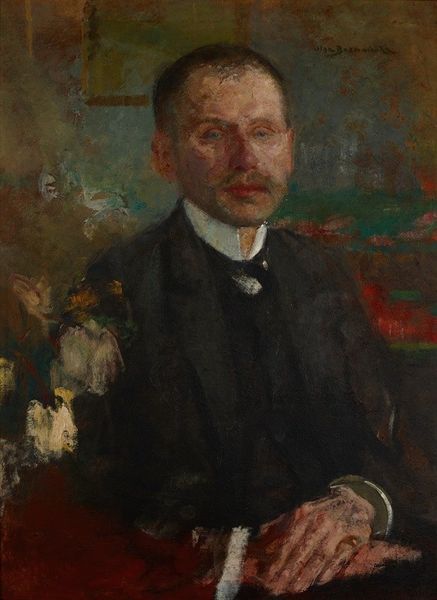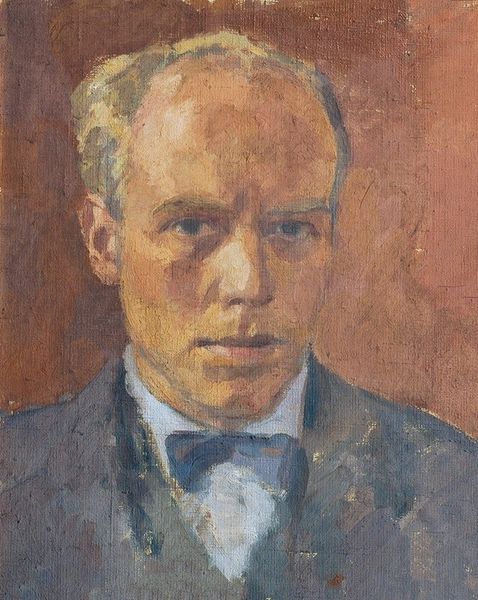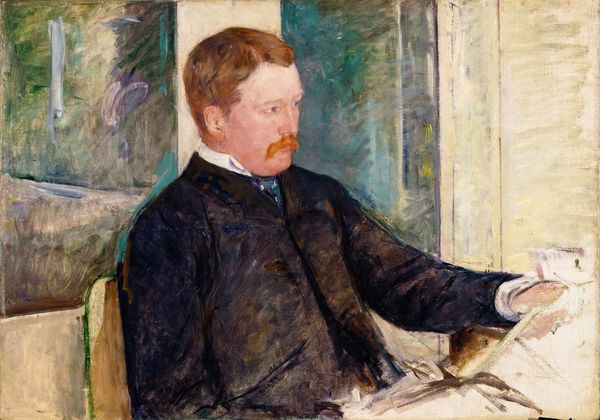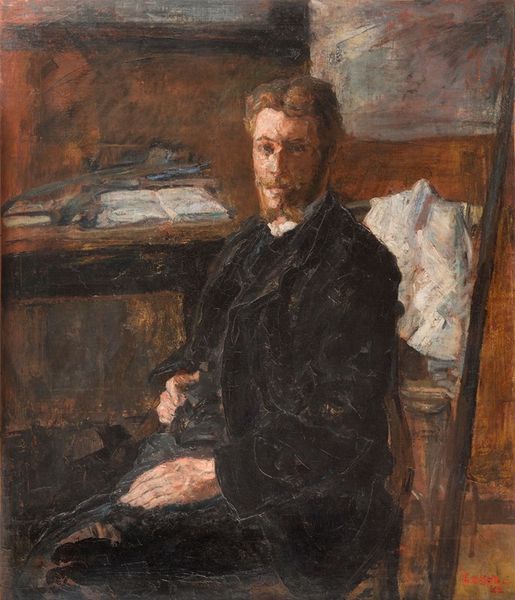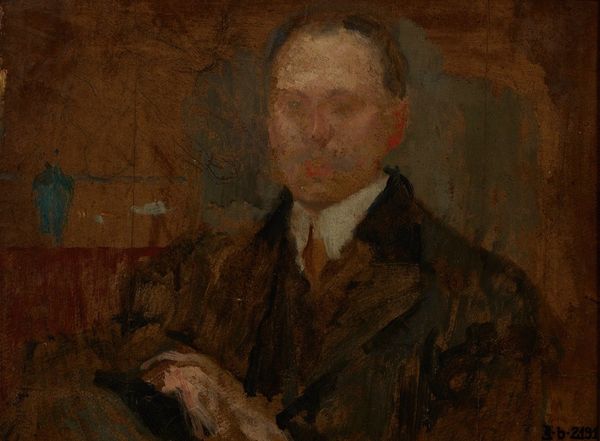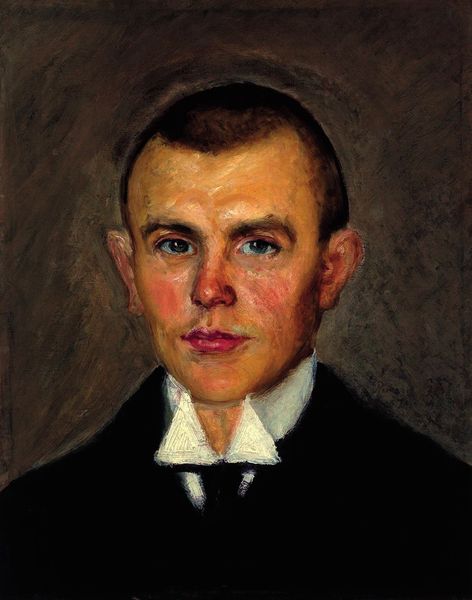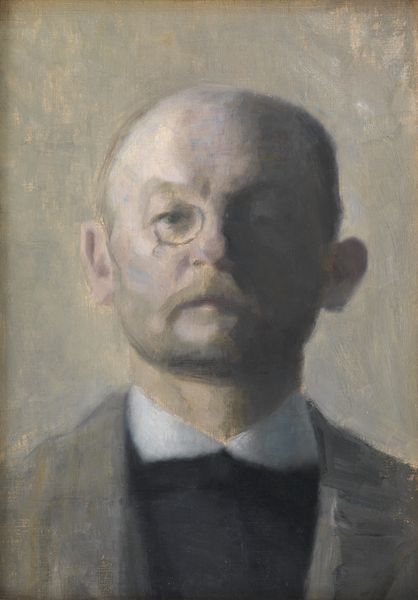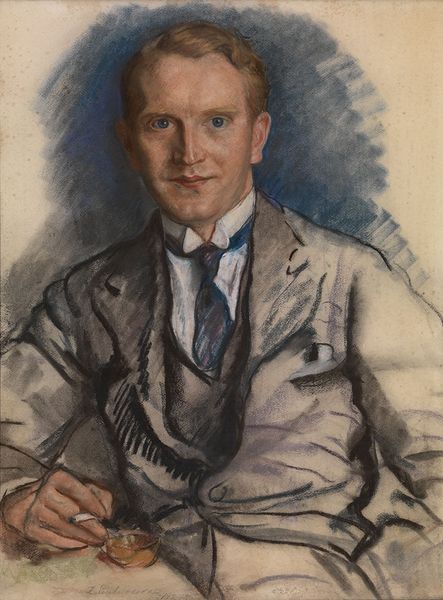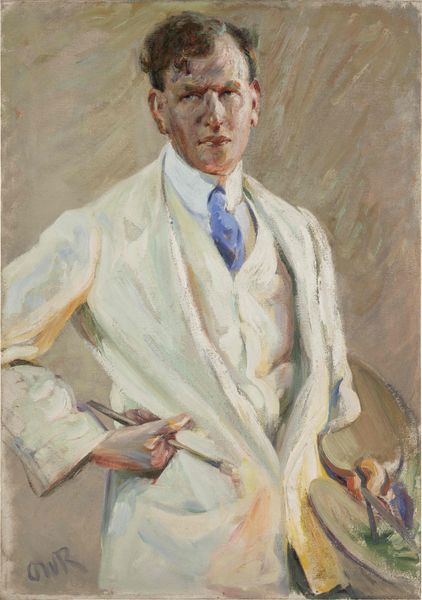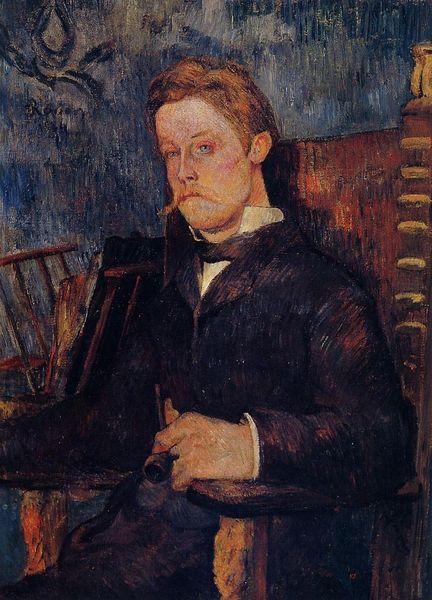
painting, oil-paint
#
portrait
#
figurative
#
painting
#
impressionism
#
oil-paint
#
figuration
#
oil painting
#
portrait drawing
#
portrait art
#
fine art portrait
Copyright: Public Domain: Artvee
Curator: Looking at this work, you can see Henri de Toulouse-Lautrec's oil painting, "Frederick Wenz," likely completed between 1886 and 1890. It strikes me as a pretty straightforward portrait of its time. Editor: My initial impression is one of restraint. The muted palette, predominantly earthy tones, creates a somber atmosphere. The subject’s averted gaze adds to the sense of introspection. Curator: Wenz was, as I understand, a bartender at a popular Montmartre hangout, a place Lautrec frequented. The artist seems to have captured something beyond mere likeness here. One wonders about the sitter’s place in Parisian nightlife, beyond his profession. Editor: Absolutely. Consider the composition: the strong horizontal line of his suit contrasts with the verticality of the background panels. There’s a tension created, suggesting a man confined within societal structures, even within the pictorial frame. It adds depth and layers beyond simple representation. Curator: Lautrec was fascinated by the performers, the demimonde of Paris. Do you see Wenz as an outsider as well? Someone on the periphery? His position certainly provided insight into that world. Editor: Possibly, although I am cautious in seeing a reflection of class in portraiture without strong evidence, but it is possible he has positioned the subject. From a purely formal standpoint, the slightly blurred brushstrokes lend the figure an air of transience. Is he about to move, is he a permanent figure? The visible brushstrokes show a figure not totally at peace with the society he inhabits. Curator: And his expression, it is open to interpretation, perhaps he is caught unaware. Lautrec captured that ambiguity brilliantly. This piece, for me, serves as a valuable document of working-class identity within the context of Montmartre's vibrant, yet unequal, social sphere. It gives us a valuable, intimate picture. Editor: Yes, the ambiguity is intriguing. It invites repeated viewing, drawing you in to tease apart those quiet signifiers within Lautrec’s technique. Each time it shifts your perception of both sitter and artist. Curator: It has certainly given me more to think about concerning the artist’s motivations when depicting this man of Montmartre. Editor: And I am glad I noticed a restraint within both man and artistic practice. It encourages you to draw more meaning.
Comments
No comments
Be the first to comment and join the conversation on the ultimate creative platform.
